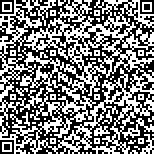| 引用本文: | 何政,张昊强.超高层建筑结构竖向地震响应的谱单元分析[J].哈尔滨工业大学学报,2014,46(8):72.DOI:10.11918/j.issn.0367-6234.2014.08.012 |
| HE Zheng,ZHANG Haoqiang.Spectrum elements for simulating responses of ultra high rise building structures excited by vertical component of impulse type strong earthquakes[J].Journal of Harbin Institute of Technology,2014,46(8):72.DOI:10.11918/j.issn.0367-6234.2014.08.012 |
|
| 摘要: |
| 为研究脉冲型强震中的竖向分量对超高层建筑结构动力响应的影响,针对常见的框架——核心筒体系,应用谱单元分析其简化的主结构体系模型在脉冲型强震竖向分量作用下的波动效应,并与基于振动力学的动力时程分析结果进行比较.为反映结构体系中巨型水平联系构件中剪切变形的影响,推导了考虑剪切变形的Timoshenko梁谱单元,竖向构件的轴向反应则用谱单元中的杆单元来模拟,在分析中通过对波动方程的修正来反映地震波传播的时延性.算例分析结果表明:在脉冲型强震竖向分量作用下,竖向构件的轴力波动较为明显,内部核心筒与外部巨型柱的相对错动效应显著,横向构件剪切问题不容忽视,此类损伤与后继水平地震分量作用的非线性耦合效应更须注意. |
| 关键词: 超高层建筑 脉冲型激励 竖向地震 谱单元方法 波动效应 剪切变形 Timoshenko梁 |
| DOI:10.11918/j.issn.0367-6234.2014.08.012 |
| 分类号:TU355 |
| 基金项目:国家自然科学基金资助项目(5,1); 高等学校博士点专项科研基金资助项目(20120041110001). |
|
| Spectrum elements for simulating responses of ultra high rise building structures excited by vertical component of impulse type strong earthquakes |
|
HE Zheng, ZHANG Haoqiang
|
|
(Dept. of Civil Engineering, Dalian University of Technology, 116024 Dalian, Liaoning, China)
|
| Abstract: |
| To investigate the influence of the vertical component of impulse-type strong earthquakes on the dynamic responses of ultra high-rise buildings, spectral elements are applied to analyze the wave effect of a simplified computational model for the main structure of typical frame core-wall structural system excited by the vertical component of impulse-type strong earthquakes. Then, the dynamic time-history results from this method are compared with those from classical vibration mechanics. In the wave propagation analysis, the spectral element using the Timoshenko’s beam theory is developed to reflect shear deformation in mega horizontal transverse link members. The axial responses of vertical members are modeled by rod spectral element and the dynamic wave equilibrium is modified to account for the time delay as earthquake waves propagating through structures. The results from examples analysis indicate obvious fluctuation of axial force in vertical members and significant relative displacement between core walls and external mega columns. Hence, shear problem in transverse link elements cannot be ignored. Such shear-induced damage would be nonlinearily coupled with the subsequent horizontal component of impulse-type strong earthquakes, requiring special attention. |
| Key words: ultra high-rise building impulse-type excitation vertical earthquake spectral element method wave propagation effect shear deformation Timoshenko beam |







